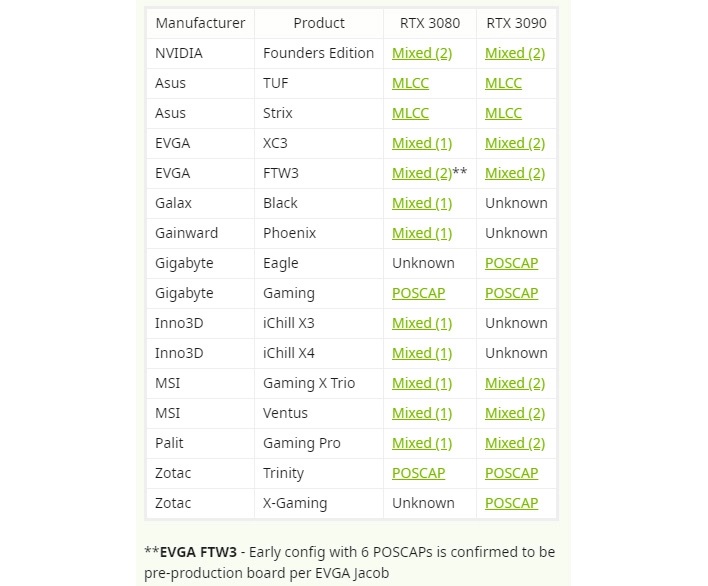A lot of Nvidia’s new RTX 3080 and 3090 cards are suffering from strange issues while gaming. According to anecdotal reports around the internet, people are experiencing problems ranging from stuttering during games, to crashes. JayzTwoCents recently took a peek into inside, and seems to have narrowed it down to bad power delivery.
On the back of the actual GPU chip are a series of capacitors. These are designed not only to provide stable power to the processor, but to filter out electrical noise. Out of the six capacitor banks, Nvidia’s reference design calls for two sets of higher quality multi-layer ceramic capacitors (MLCC), while the rest can be the cheaper polymer tantalum (POSCAP).
The MLCCs are much better at filtering noise than the POSCAP capacitors, but they are more expensive. While Nvidia’s own cards stick with the reference layout, many board partners have chosen to use only one bank of MLCCs, or none at all, in order to cut costs.
The problem is that high speed chips are very sensitive to electrical noise. When the drivers ask the GPU to run at its full boost clocks, the increased noise from the higher current can introduce errors into its calculations. As these errors pile up, that’s where you get weird behaviour in games. I believe Jay compared it to studying while a frat party was going on right next to you, and then being asked to work faster.
A list of the affected cards was compiled by Reddit user RoseKing. So far, there doesn’t seem to be an easy fix to the issue, save issuing firmware updates that reduce boost clock speeds. Something which isn’t going to sit well with a lot of gamers who paid top dollar for a product that no longer performs as advertised.

This does tend to be par for the course for a lot of third party cards from so called AIBs. Nvidia and AMD give these manufacturers a reference design, but they are under no obligation to follow it. Unfortunately, all that extra bling gamers seem to like comes at a cost, and that means cutting corners elsewhere to get these cards close to MSRP. AMD had similar issues with certain third party Vega cards not that long ago. Yet another hot and hungry GPU with sensitive power requirements.
This is why it’s important to wait for independent reviews to come out, rather than making impulse purchases on new tech. Not all cards are created equal, and first generation hardware will inevitably have bugs. These usually do get ironed out in later revisions, so there’s no need to rush. The good news is that all those scalpers are now stuck trying to sell inferior cards at top dollar. Hopefully that makes at least some folks second guess a foolish purchase.
And yes I know that’s a 2080 Ti in the feature image. Here at MMNTech, we like to recycle. Yes, this isn’t Nvidia’s first rodeo with power delivery issues in early cards.





